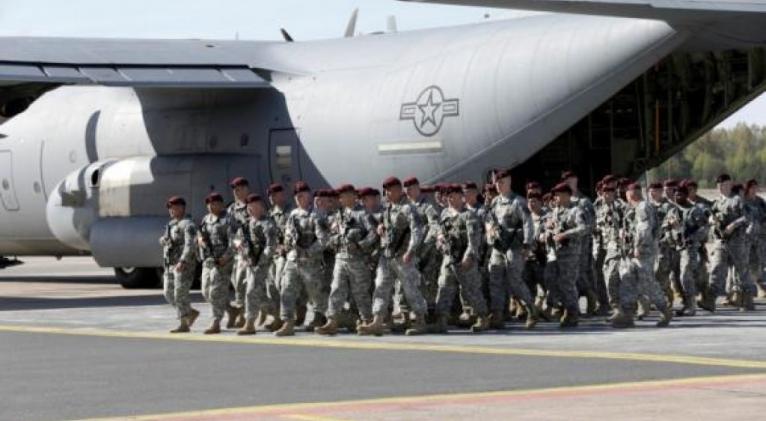U.S. to cut European military bases as budgets shrink
especiales

The moves were projected to save $500 million a year. In the biggest one, the Pentagon said it would leave RAF Mildenhall northeast of London, home to tanker, reconnaissance and special operations aircraft, and withdraw 3,200 military personnel and their families over the next several years.
Several facilities in Germany would be closed, but overall U.S. troop numbers there were expected to rise a few hundred. Some 500 U.S. personnel would be withdrawn from Lajes Field in the Azores, reducing U.S. troop numbers in Portugal. Some 300 troops would be shifted from Germany to Italy.
Assistant Defense Secretary Derek Chollet said the changes in half a dozen European countries would consolidate and reduce support infrastructure but would not affect the U.S. military's operational capacity in the region.
"These ... adjustments do not diminish our ability to meet our commitments to allies and partners," Chollet told a briefing. "In fact, these decisions will produce savings that will enable us to maintain a robust force presence in Europe."
The reductions at RAF Mildenhall would be partially offset later in the decade when the Pentagon adds 1,200 personnel and two squadrons of F-35 Joint Strike Fighters at nearby RAF Lakenheath, home to the U.S. 48th Fighter Wing. The net loss of U.S. troops in Britain would be about 2,000.
British Defense Secretary Michael Fallon voiced disappointment at the loss of U.S. forces from Mildenhall and two other bases, but said in a statement to Parliament that the advance notice would help mitigate the local impact. The Mildenhall withdrawal is not likely to begin until 2019.
Fallon said the decision to base F-35s at RAF Lackenheath "paves the way for continued close collaboration between our respective forces."
The Pentagon, under orders to reduce projected spending by nearly $1 trillion over a decade, has repeatedly asked Congress to close some facilities in the United States, where excess capacity is thought to be around 20 percent.
But Congress has resisted any closures, and some lawmakers have told defense officials to cut excess facilities in Europe first. The United States has more than 64,000 troops stationed in Europe, most in Germany, Italy and Britain.
The moves come amid heightened tensions between Russia and NATO after Moscow's annexation of the Ukraine's Crimean region and its support for pro-Russian militants opposed to the Kiev government.
Last week, Lieutenant General Ben Hodges, commander of U.S. Army troops in Europe, told Reuters that budget pressures made cuts in U.S. forces inevitable, but it would be good to maintain current levels in Europe until the security picture clarifies.
"We can carry out the tasks that we have now, that are assigned now, with the currently assigned forces and infrastructure and with the rotational forces that the Army has committed to provide," he said. "It would certainly be a challenge if they got any less."
(Additional reporting by Adrian Croft in Brussels and Kylie MacLellan in London; Editing by David Storey and David Gregorio)













Add new comment